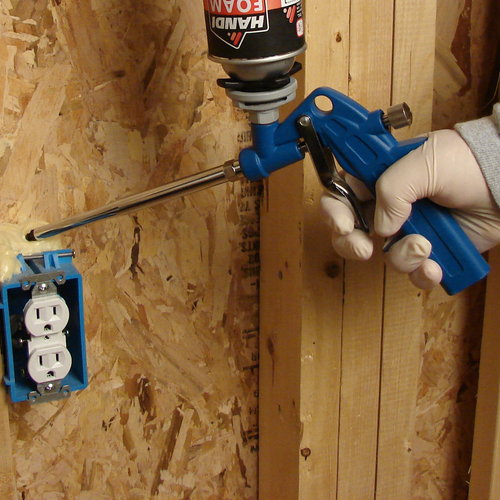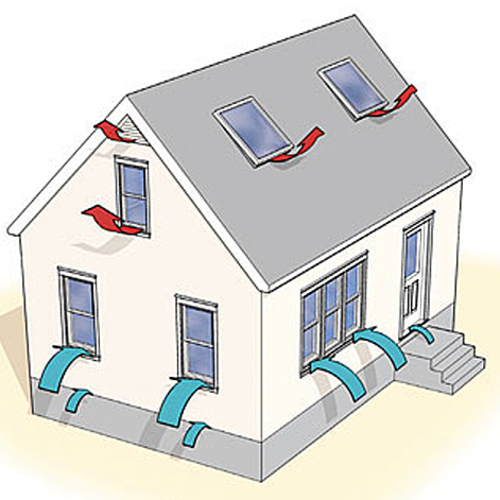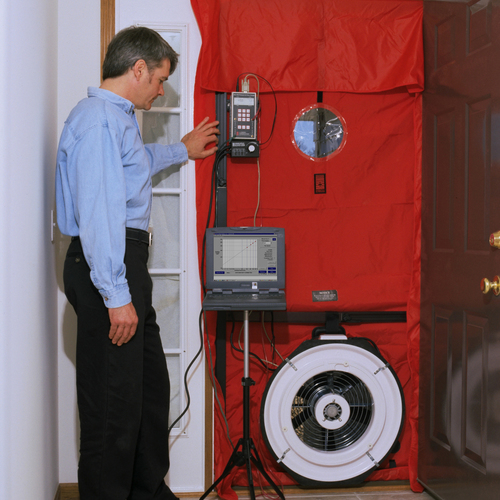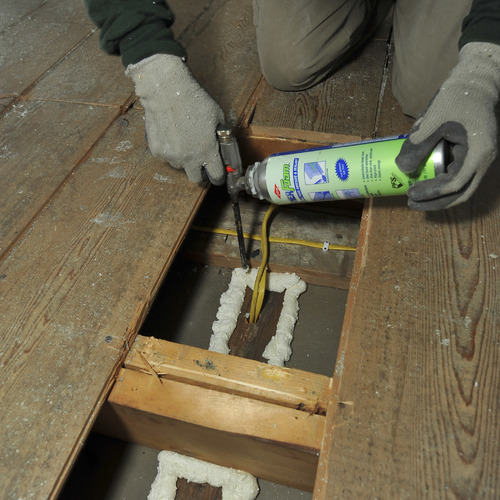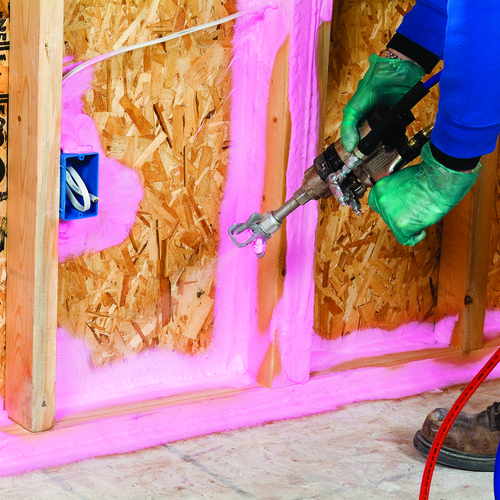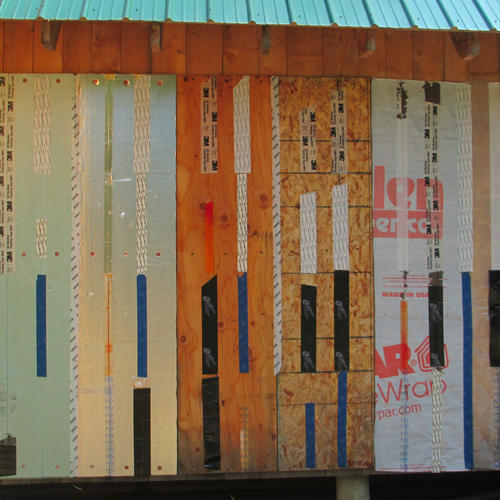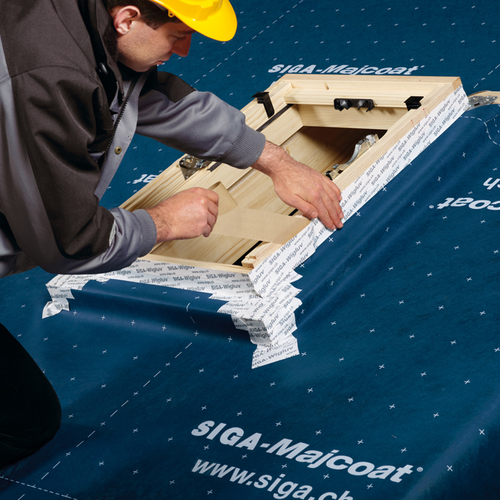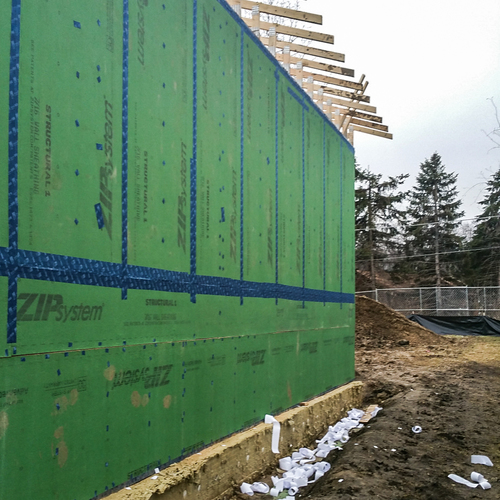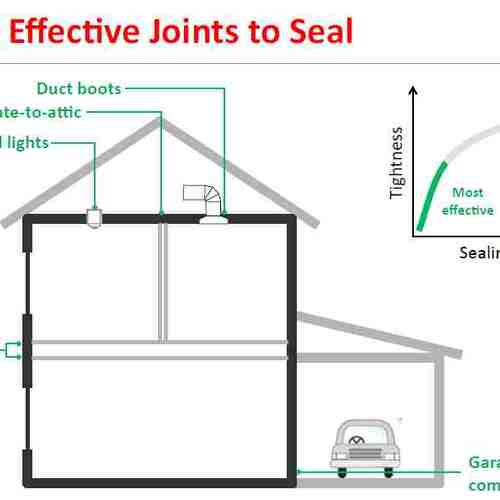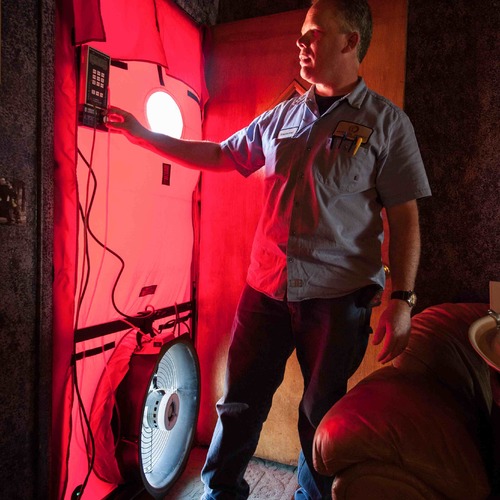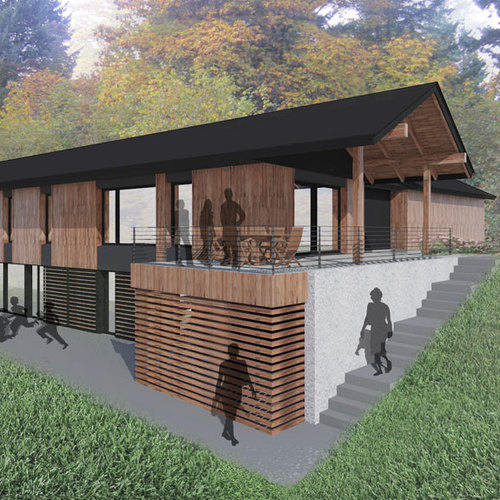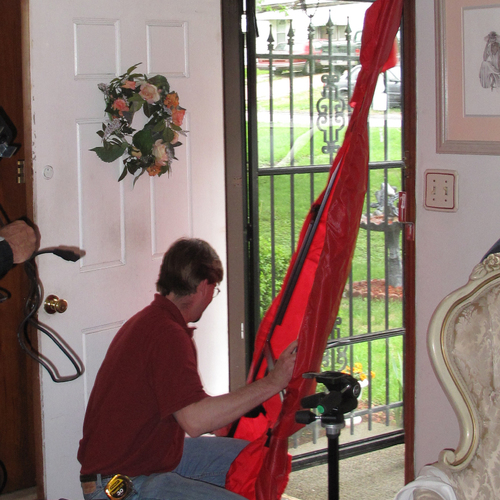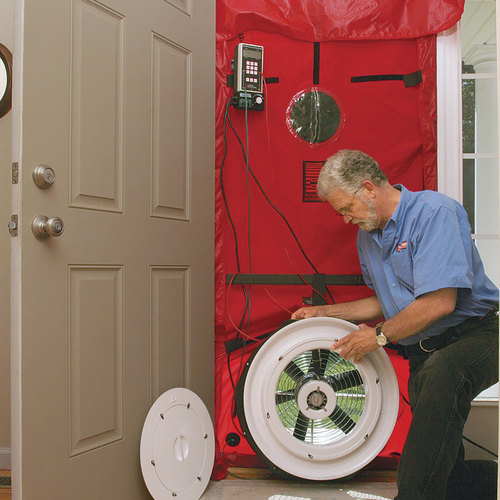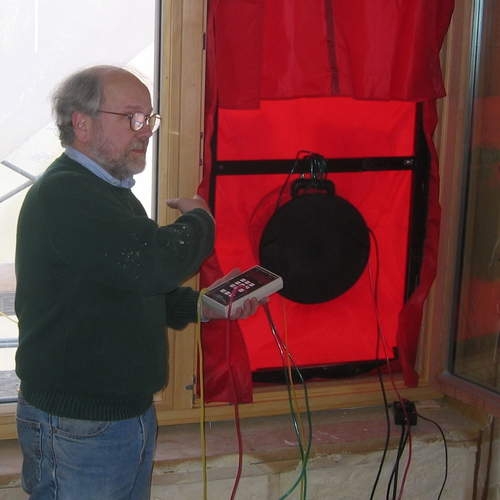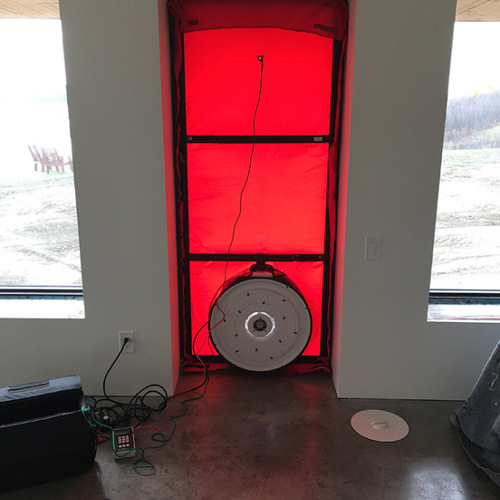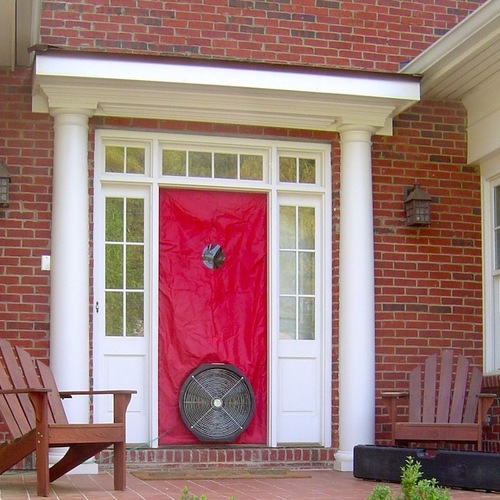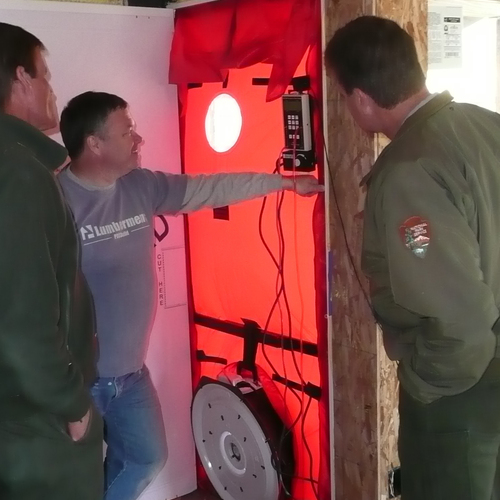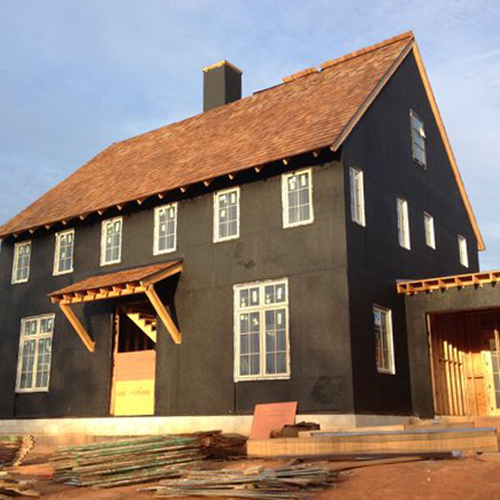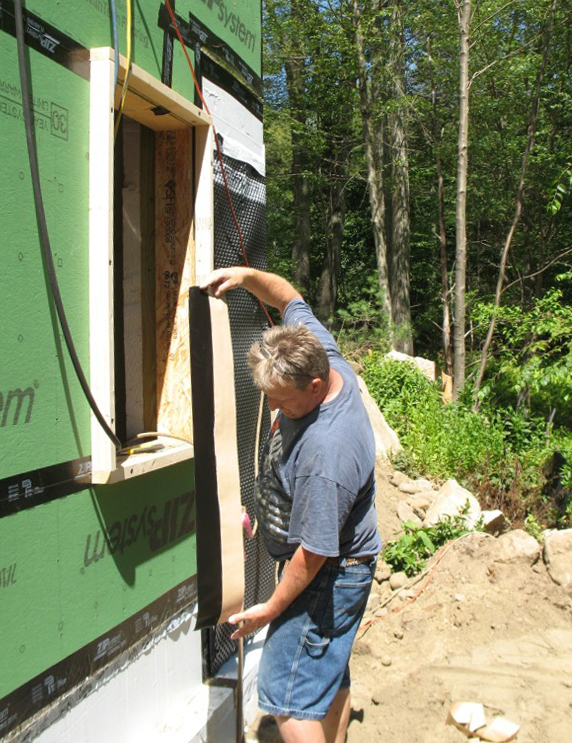
This is a list of the most important GBA articles on air barriers and air sealing.
If you are looking for an index that spans all categories, with a special focus on “how to” articles, check out this resource page: “How to do Everything.”
-
Questions and Answers About Air Barriers
UPDATED on December 12, 2014 Builders of a certain age — say, those older than about 55 or 60 — started their careers at a time when no one talked about air leakage or air barriers. Back in the early 1970s, even engineers were ignorant about air leakage in buildings, because the basic research hadn’t been done yet. Times have changed, and most residential building codes now require builders to include details designed to reduce air leakage. Today’s young carpenters are working on job sites where air barriers matter.
-
An Introduction to Pressure Diagnostics
When it comes to understanding heating systems, most of us are comfortable with the basics. To warm up your house on a cold day, you need a source of heat in your living room — say, a wood stove or a radiator. To keep the heat in your house, you need insulation. That’s the way most builders understood heating from 1935 to 1980. Somewhere around 1980, however, building scientists began to realize that the old picture was imperfect.
-
Blower Door Basics
Leaky homes are hard to heat and hard to cool. The only way to know whether your home is leaky or tight is to measure its air leakage rate with a blower door. A blower door is a tool that depressurizes a house; this depressurization exaggerates the home’s air leaks, making the leaks easier to measure and locate. An energy-efficient house must be as airtight as possible. Many older U.S. homes are so leaky that a third to a half of the home’s heat loss comes from air leaks.
-
Air-Sealing an Attic
If you want to improve the energy performance of an older house, one of the first steps is to plug your attic air leaks. Although many GBA articles address aspects of attic air sealing, no single article provides an overview of the topic. This article is an attempt to provide that missing overview. I’ll try to explain how you can seal air leaks in a conventional vented, unconditioned attic. If your house has cathedral ceilings — that is, insulated sloped roof assemblies — the air sealing tips in this article don’t apply to your house.
-
Air Sealing With Sprayable Caulk
Homes insulated with fiberglass batts are leakier than homes insulated with cellulose or spray polyurethane foam. Until recently, fiberglass batt manufacturers shrugged off the damning air-leakage data, insisting that their batts could deliver the R-value promised on the packaging — and then changed the subject.
-
Blower-door-directed air sealing
same specs as the TABW player
-
Air-Sealing Tapes and Gaskets
UPDATED March 8, 2013 After this article was published, Martin Holladay conducted a test of eleven air-sealing tapes on a variety of materials. To read the results of Holladay's testing, see Backyard Tape Test and Return to the Backyard Tape Test.
-
Return to the Backyard Tape Test
UPDATED on September 7, 2017 with a new postscript. In the fall of 2012, I tested the performance of 11 air-sealing tapes by attaching samples to six different substrates mounted on the exterior wall of my woodshed. A month later, I tried to remove the tape samples to determine which tapes were most tenacious. I reported my findings in the April/May 2013 issue of Fine Homebuilding. (The details of the test set-up can be found in that article, “Backyard Tape Test.”)
-
One Air Barrier or Two?
Although building scientists have understood the advantages of airtight construction details for years, few residential plans include air barrier details. That’s nuts. Do the blueprints show where the air barrier goes? Ideally, construction documents should show the location of a building’s air barrier, and should explain how the builder is expected to maintain air-barrier continuity at penetrations and important intersections.
-
Air Barriers
An Air Barrier Is an Essential Part of the Building Envelope
-
A Review of Siga Wigluv Air-Sealing Tape
Every house needs four control layers. In order of importance, these layers need to provide: 1. Water control 2. Air control 3. Vapor control 4. Thermal control The building codes have dictated the levels of thermal control and vapor control that builders must adhere to, and nearly every builder in the U.S. knows off the top of their head the R-value of the insulation in their walls and attics.
-
Flatrock Passive: Air Sealing the Penetrations
Editor's Note: This is one of a series of blogs by David Goodyear describing the construction of his new home in Flatrock, Newfoundland, the first in the province built to the Passive House standard. The first installment of the GBA blog series was titled An Introduction to the Flatrock Passive House. For a list of Goodyear's earlier blogs on this site, see the "Related Articles" sidebar below; you'll find his complete blog here.
-
Urban Rustic: Air Sealing the Attic Floor
Editor's note: This post is one of a series by Eric Whetzel about the design and construction of his house in Palatine, Illinois, a suburb of Chicago. The first blog in his series was called An Introduction to a New Passive House Project; a list of Eric's previous posts appears below. For more details, see Eric's blog, Kimchi & Kraut.
-
Urban Rustic: Air Sealing the Exterior Sheathing
Editor's note: This post is one of a series by Eric Whetzel about the design and construction of his house in Palatine, Illinois, a suburb of Chicago. The first blog in his series was called An Introduction to a New Passive House Project; a list of Eric's previous posts appears below. For more details, see Eric's blog, Kimchi & Kraut.
-
Careful Air Sealing Trims Energy Use at New College Dorms
By Hal Bohner In the cold climate of coastal Maine, effective air sealing is critical to maximizing energy efficiency. The architect for the project, Bruce Coldham, said, “We have tried many approaches to air sealing over the past twenty years, but we hit the jackpot with these buildings. The results were spectacular. We achieved a remarkable final airtightness of 0.79 ACH50 consistent over three similar buildings. Without the comprehensive air-sealing design and implementation, the buildings would have been seven-plus times leakier.”
-
Air Sealing and Insulation in the ProHOME
Editor's note: This post originally was published as part of the ProHOME series at Fine Homebuilding magazine. Mike Guertin, an editorial adviser at the magazine, is building the house in East Greenwich, Rhode Island.
-
Prevent Ice Dams With Air Sealing and Insulation
During snowy winters, many northern homes are plagued by ice dams. If your house suffers from wet ceilings during the winter, you may be ready to call up a contractor. Be careful, though: since most contractors don’t understand the causes of ice dams, they often suggest the wrong solution.
-
Getting the Biggest Bang for Your Air-Sealing Buck
Most new homes are leaky. In the typical new home, significant volumes of air enter through cracks near the basement rim joists and exit through ceiling holes on the building’s top floor. These air leaks waste tremendous amount of energy.
-
Using Interior Poly As an Air Barrier
Back in the 1980s, Canadian energy experts urged builders to use interior polyethylene as an air barrier material. If the poly was installed conscientiously, and all seams were sealed with Tremco acoustical sealant, the approach worked well — at least in cold climates.
-
What’s More Important, Air-Sealing or Insulation?
Green Building Advisor reader Ani Brown is getting ready to build a new house, and like most people in her position Brown will have to make some important choices on how to make the most of a limited construction budget. Her immediate concern is insulation and air-sealing, two related details that will have a lot to do with how comfortable and durable the new house will be.
-
Framing and Air-Sealing Tips for High-Performance Walls
In three new videos produced by Oregon builder Hammer & Hand, lead carpenter Val Darrah explains how he keeps air sealing in mind as he frames the walls for his current project, the Pumpkin Ridge Passive House. Val explains why he prefers to use a router rather than a saw when he cuts out window openings in the OSB sheathing. He also shares his method of building window bucks out of 3/4-inch plywood.
-
New Air Sealing Requirements in the 2009 International Residential Code
One of the most cost-effective ways of lowering residential energy costs is to reduce a home’s air leakage rate, so it makes sense for energy codes to ratchet up air-sealing requirements. The latest (2009) version of the International Residential Code does exactly that.
-
Blower Door Testing
Air leaks in houses are a big problem. Leaks make homes uncomfortable and expensive to heat and cool. They create condensing cold spots that attract mold and rot. They lead to frozen pipes and make homes less resilient during prolonged power outages.
-
Blower Doors Have Become Essential
Blower doors are spoken of in reverential tones in energy circles. Or at least they were a few years back. Now you can’t throw a manometer without hitting a contractor setting up a blower door. Which is a very, very good thing. With the incorporation of air leakage standards into various housing codes, blower doors are becoming essential. In fact, I tell customers that a simple shorthand for whether your insulation contractors grok building science is whether they own/use/understand blower doors.
-
Blue Heron EcoHaus: Blower Door Testing
Editor's note: Kent Earle and his wife, Darcie, write a blog called Blue Heron EcoHaus, documenting their journey “from urbanites to ruralites” and the construction of a superinsulated house on the Canadian prairies. Their previous blog on GBA was called Insulation, Air-Sealing, and a Solar Array. The blog below was originally published in January. (A complete list of Kent Earle's GBA blogs is provided in the “Related articles” sidebar below.)
-
Flatrock Passive: Blower Door Test Comes up Roses
Editor's Note: This is one of a series of blogs by David Goodyear describing the construction of his new home in Flatrock, Newfoundland, the first in the province built to the Passive House standard. The first installment of the GBA blog series was titled An Introduction to the Flatrock Passive House. For a list of Goodyear's earlier blogs on this site, see the "Related Articles" sidebar below; you'll find his complete blog here.
-
What’s a Blower Door Good For?
In last week's blog, I suggested that talking about infiltration rates in terms of air changes per hour isn’t an accurate way to portray air leakage. The problem is that you’re dividing by volume but the leaks happen at the surface. I don’t think ACH50 is going away anytime soon, and I use it myself because everyone else does, even though it’s biased toward larger houses.
-
How to Get Good Blower-Door Results
Our development company has been working with several builders, including our own parent company, to determine the factors that affect our blower-door test results. The following list includes things we have learned to do, and things we have learned not to do, to achieve an optimal blower door test result. (We aim to achieve the Passivhaus standard of 0.6 ach50.)
-
Understanding Blower Door Tests
Blower door tests reveal the rate of air leakage in and out of a home A full energy audit can remedy many of those leaks and net energy savings.
-
Air Barrier or Vapor Barrier? – Building Science Podcast
_This podcast series is excerpted from a two-day class called "Building Science Fundamentals" taught by Dr. Joe Lstiburek and Dr. John Straube, of Building Science Corporation._
-
Does Your Air Barrier Work in Both Directions?
Do you want a good air barrier on your house? Of course you do. No one who knows anything at all about building science believes that old myth that a house needs to breathe. We want airtight houses, but then we want mechanical ventilation to bring in fresh air from outside (well, at least as fresh as you can get from your outside).
-
Understanding Air Barriers, Vapor Barriers, and Drainage Planes
Is housewrap a vapor barrier? What's the purpose of building paper? Who'll stop the rain? I've covered this topic in various forms before, but the confusion about what the different building materials do is so widespread that I have to keep coming back to it. I'm going to keep it simple here so maybe we can get a few more people to use the proper terms, and especially to know when not to use the term “vapor barrier” ... and when not to use it.
